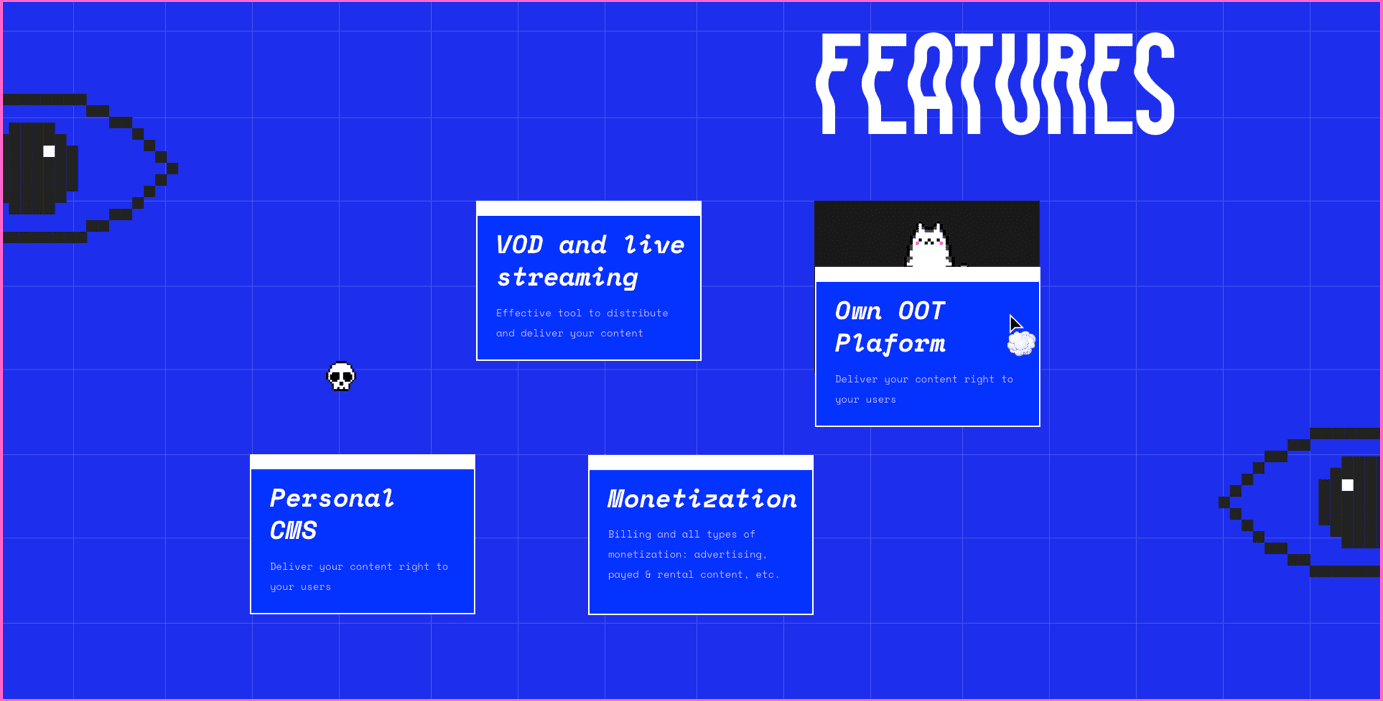Mass obsession with perfection. How can we define this? Is it doing a great job or is it looking great? And is there a link between these two and the apparent reaction of brutalism, glitch and pixel art?
Company Mission Statements still exist in one form or another. They were in great vogue 20 years ago. Initially, as they percolated into the business world, many people, especially the companies themselves, took the production of them very seriously. They were supposed to be a clear statement of company objectives not only for the company itself to focus around to deliver its objectives, but for the consumer to have faith in the integrity of the company. Then a few people started to notice that in fact these companies were simply guilty of bandwagonism. This probably started when everyone started touting their green credentials. When oil companies jumped on this particular bandwagon, the cat was out of the bag.
Every company wanted to appear “perfect” and getting better every day in every way. Eventually it was seen as The Emperor’s New Clothes. Companies that shouted loud and proud about their company service values, then proceeded to provide shocking service. They were just paying lip service to the idea of perfectionism. The early Internet laid bear their pretensions to values they obviously never held.
With the ever-greater onset of political correctness these stated aims became ever more distant from reality. And when statements become distant from people’s experience of reality, cynicism is often the result. The cynicism this has engendered allied with other such misguided attempts to appear perfect such as:
The triumph of mediocrity — where everyone wins and no one is allowed to lose. Rampant in schools nowadays, leading to the young being ill-equipped to deal with failure later in life.
The race to the bottom — where people are employed for other than meritocratic reasons this can only lead to a compromising of standards.
The triumph of Feelings mattering more than Thoughts — in public discourse where rational arguments supported by facts are disregarded in favour of how people feel. We can see a perfect exposition of this today in the case of 16 year old Greta Thunberg, a Swedish “climate activist” being invited to speak to the Pope, EU leaders and the British parliament. She has nothing new to say, misinterprets facts and offers no solutions, but as a “product” she is very attractive to those who want to appear good by association with “youth” and “caring”. Check this video for the triumph of feelings over rationality: “It’s not about the Nail.”
Many recognise that things are not perfect and never have been nor can be. So just as punk opened people’s eyes via music to a more real, more cynical way of viewing the world thus does glitch and pixel art do so today. The cynicism sees the fly in the ointment. Or at least recognises that there is another way of seeing that is not just superficial. And of course, anything that stands out, reaches a greater audience, or at least connects to a niche.
Some people will always care, swimming against the tide as their conscientiousness will not allow them to do other. Ester cares.
Monospaced fonts were widely used in early computers era, due to the extremely limited graphical capabilities.

The clean line, the clarity in an unclear world, does it sell what it purports to sell?
How to stand out when everything is photoshopped and airbrushed to within an inch of its life? Although almost everyone knows this, just knowing that the model isn’t perfect in reality, doesn’t help you feel any better about your own body when most images are manipulated to appear perfect. The slow drip of propaganda creates its own reality.
It is not only simple maths, but it is like the slow drip of propaganda. Say something enough times and no matter how extreme the lie, sooner or later the mass of people will believe it. There is a fightback of course, oversize models, and make-up free days but perhaps these are like a sparrow tweeting in the vastness of a forest. No one will really hear it. Because it doesn’t sell the dream, we all have to be perfect on the one side, and the sellers of product on the other creating a demand for their product. Nothing will ever change our fundamental psychology.
However, there are enough people who have frankly had enough of this sanitised world of sameness, and just as one development in art, in its dying stages, creates a reaction leading on to the next stage in the continual cycle of change, and just as Bohemianism can only exist because it opposes the status quo, if there is no status quo, no clearly defined tradition then there can be no rebellion.
Ester TV’s website is a mix of glitch and pixel art

And Web brutalism? Where does this fit in?
In architectural terms it was a reaction against the fluidity and frivolity of earlier design modes, against an experimentalism where anything could be possible. State Socialism and Fascism tried to put an end to all that. Simple exposition of power where the group (or the state) was bigger and better than the sum of all the individuals.
Well web brutalism is just a little bit nicer than that. In the early days of web design, it was a case of what can we do? We can only do this. Then design principles began to influence the underlying architecture of sites and they became prettier. These two strands then got a little confused and it was a case of “we can do all this so let’s do it all”.
Remember the million dollar homepage (http://www.milliondollarhomepage.com/)? Just quite where this fitted into this development, I shall leave you to decide. Was the owner the original disrupter?
Doing everything you can just because you can, is a sort of anti-design principle, so then the reaction set in and so many sites took beauty and perfectionism as their cues, mirroring the rise of Instagram and Facebook etc and everyone looking perfect all the time.
But just as in every class at school there are a couple of Goths, there are some who see things in a different way. Those who know that to stand out, one simply has to be different.
Voila! Web Brutalism, Glitch and pixel art!
‘It’s Not About The Nail’ Youtube Video. © Jason Headley


